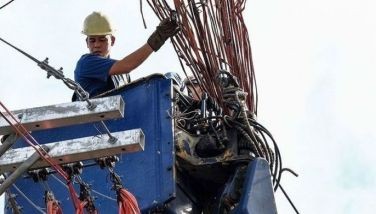DA allots P1.5 billion for lending

MANILA, Philippines - The Department of Agriculture (DA) is setting aside P1.5 billion from the P4.5-billion Agricultural Guarantee Fund Pool (AGFP) as emergency fund for crop damage resulting from the series of typhoons and the drought that is currently affecting the country.
This was learned yesterday from Agriculture Undersecretary Berna Romulo-Puyat, chairperson of the AGFP governing board, following yesterday’s recognition of AGFP partners ceremony at the Bureau of Soils and Water Management (BSWM) in Quezon City.
Puyat said, the amount will be allocated to boost the funding of the Philippine Crop Insurance Corp. (PCIC) and the AGFP- Cooperative Banks Agri-lending Program (CBAP).
The AGFP was created by Administrative Order 225-A issued by President Arroyo in May 2008.
AO 225-A mandates government-owned and controlled corporations (GOCCs) and government financial institutions (GFIs) to allocate five percent of their 2007 surplus to projects on rice and food production.
The program is intended to provide guarantee cover to unsecured loans extended by financial institutions and other lending conduits such as rural and cooperative banks, cooperatives, NGOs, small and medium enterprises (SMEs) to small farmer-borrowers engaged in the production of rice and other food commodities.
The AGFP extends guarantee cover to eligible loan exposures of participating financing institutions of up to 85 percent of the loan principal.
Risks from losses due to non-payment of loans, including those that were caused by natural calamities such as typhoons, floods, etc, pests and diseases, as well as market aberrations – with the exception of fraud on the part of the conduit – shall be covered by the AGFP.
The DA yesterday gave recognition to credit conduits for their contributions in expanding agriculture credit and productivity through agriculture guarantee.
Initiated by former Agriculture Secretary Arthur C. Yap, the AGFP is a credit risk-mitigating mechanism that would encourage lending conduits to extend more credit to small farmers and fisherfolk who are normally deemed to be high-risk borrowers.
- Latest
- Trending

























